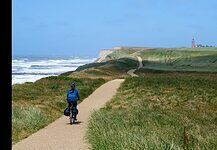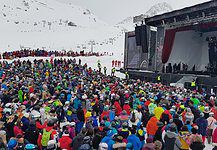Travel to Ireland
Ireland is an island in north-western Europe. The island is divided into Ireland (aka The Republic of Ireland) and Northern Island, which is part of the United Kingdom.
Ireland is known for its beautiful landscapes – unspoilt wilderness, romantic ruins, jagged coastlines and rolling green hills. It’s also home to one of Europe’s liveliest capital cities, Dublin. Known for pint drinking, lively pubs, folk music and the ever-enchanting Irish accent. Ireland is certainly not lacking on the lively nightlife front.
Some of the best places to visit in Ireland include Connemara, Donegal, the mountains of Mourne, the stunning scenery of counties Kerry and Cork, and the popular Causeway Coast. A fun way to experience Ireland holidays is to rent a car and drive between the small villages, stopping along the way to take in the views.
Ireland is a magical country, packed with beautiful landscapes, wonder, history, and fun. If planning a trip to Ireland has been on your mind, we recommend that you start doing so right now!
Visa Requirements for Ireland
While Ireland is a member of the European Union, it is not a member of the Schengen Area. It therefore has its own set of immigration controls to those in the Schengen zone. Citizens of the UK, EU and EEA countries (including Switzerland) will only need to show a valid national ID card or passport, without needing a visa to enter or work in Ireland.
Citizens of several other nations will require valid passports for entry, and won’t need visas for stays shorter than 90 days. This includes nationals from Australia, New Zealand, the US, and the UAE along with a few African, Asian, and South American countries. Travelers will need to provide evidence of return flights, accommodation and adequate funds for the duration of the stay to get the 90-day tourist stamp upon arrival. Longer stays, employment, and citizens of other countries normally require advance visas.
Citizens of other countries should check the visa requirements with the Irish Department of Foreign Affairs on this website.
Important Cultural Information
Due to their close proximity, the Irish and British do have some similarities. The Irish however, take great pride in the cultural differences that exist between Ireland, Northern Ireland and Britain. Using the term ‘British’ to describe Irish people is deeply offensive, it’s important for tourists to respect the differences.
The Republic of Ireland take great pride in their independence from the UK. The two nations are also greatly divided by religion. Because of this, conversations about both religion and politics are generally avoided at all costs.
The Irish have an upbeat sense of humour, which can sometimes be difficult for foreigners to understand. They are generally an affable, easy-going and friendly nation. The best places to visit in Ireland to experience the Irish people is in a pub. Pubs are the centre of social interaction, especially in the smaller towns.
The Irish are also extremely liberal with regards to the LGBT community.
Banking & Money in Ireland
In Ireland you pay with the Euro (€), just like in the other 24 European countries. 100 cents makes up 1 Euro. Each country can produce their own Euro coins, where one side of the coin has their own unique designs, while the other side has a European standard design. You can use the Euro in any of the eurozone countries, without needing to exchange money when crossing the borders.
The UK pound may be accepted along border areas of Northern Ireland (their currency). A few shops in Dublin, including hotels, may also take UK Pounds.
ATMs are widely available in both the cities and smaller towns. Fees are generally not charged by Irish ATMs – but check with your bank first as foreign fees may apply. Credit cards are also widely accepted – including Mastercard, Maestro and Visa.
Medical Emergency Information
There are two emergency numbers in Ireland – 112 and 999. Both are free of charge to call. 112 also works in any EU country while 999 is also the emergency contact number to call in the UK.
If you’re looking for travel insurance, we are an affiliate of World Nomads.
Wi-Fi and Internet in Ireland
There are three main operators in Ireland: Vodafone, Hutchison 3 (Three) and Meteor (by eir). All three operators offer a good service, with good coverage across the country. Note that Ireland is not part of the UK, so UK SIM cards will be charged roaming rates. European SIM cards will be better, as Ireland is part of the EU which has a ‘roam-like-at-home’ roaming pact.
You will find several shops selling SIM cards around Ireland, including stores, supermarkets, kiosks, drug stores, official outlets and at the airport. Another option is to rent a mobile MiFi device, your own hotspot. You can order these online or pick them up at the airport.
Wi-Fi is easily available at restaurants, cafes, hotels and some public spaces. Make sure to set-up a VPN (like ExpressVPN) before using public Wi-Fi spots.
Coworking in Ireland is quite popular, with several spots in Dublin, Cork, Waterford and Letterkenny.
Getting to Ireland
There are four international airports in Ireland: Dublin, Shannon in County Clare, Cork in Ireland West and Knock in County Mayo. The Dublin Airport is by far the largest, and likely the airport that you will arrive in. It is well connected to several cities in the US, Canada, the UK, continental Europe, Asia and the Middle East. The other airports are largely serviced with flights from the UK and some European cities.
The City of Derry Airport and both airports in Belfast are relatively close to the Northern Ireland / Ireland border, and can also be used as an entrypoint. Aer Lingus and Ryanair are Ireland’s two major airlines, both low-cost carriers.
Check Expedia for available flights to Ireland.
The Enterprise is the only cross-border train coming into Ireland, traveling from Belfast Central through to Dublin Connolly. It is jointly run by Irish Rail and Northern Ireland Railways. A cross-border bus service, operated by Ulsterbus and Bus Éireann, is available. Eurolines also offer bus services from Great Britain, while Bus Éireann operates bus services from Eastern Europe (Poland, Lithuania, Latvia and Estonia).
If you are catching the ferry to Ireland, then you will likely arrive at the Dublin Ferry Port, which connects Dublin to Liverpool (England), Holyhead (Wales), Cherbourg (France) and Douglas (Isle of Man). Ireland is served by numerous ferry services from Great Britain, France and Spain.
You can also arrive to Ireland via car from Northern Ireland. If you need to hire a car, consider the options available with Europcar.
Areas of Ireland
Historically, Ireland was divided into Connacht, Leinster, Munster and Ulster. However, these have no administrative significance today. The below list of areas will help with deciding where to visit in Ireland.
Dublin
Dublin is Ireland’s largest city and is in many senses the gateway to The Emerald Isle. It’s most probably your entryway into Ireland and should include a good portion of your itinerary. It’s popular for its nightlife, shopping, history and culture, including the many Dublin attractions.
Wicklow & East
Eastern Ireland includes the areas just outside of Dublin. Head south to encounter the beauty scenes of Wicklow, including stunning vistas, glacial valleys and dramatic mountain passes. The rugged landscape of East Ireland is home to some of Ireland’s archaeological finds, including a few homes from the 18th-century. Top attractions in the east include Powerscourt Estate, Glendalough, Brú na Bóinne, Castletown House and Irish National Stud.
Kilkenny & South-East
The south-east is Ireland’s warmest and driest region, also popular for Ireland holidays. Visitors to this region can enjoy quaint seaside towns and fishing villages. The country’s ancient history is felt here, with ruins of castles, abbeys and churches. Top attractions include Rock of Cashel, House of Waterford Crystal, Kilkenny City, Tintern Abbey and Waterford City.
South-West Ireland – Cork & Kerry
The south-western coastline of Ireland is a mix of inlets, peninsulas and coves. Inland, the area is mostly farmland with rocky outcrops and bogs. Attractions include Cork, Killarney, Blarney Castle, Dingle, Beara Peninsula and The Ring of Kerry.
Galway & West Ireland
The home of Galway, Mayo, Connemara, Clare and Croagh Patrick. The west of Ireland features another rugged coastline, with several peninsulas, ports and tiny islands. Galway and surrounds is home to some of Ireland’s most authentic nightlife spots – with some great folk music sessions!
Northwest Ireland – Donegal & Sligo
Much less touristy, northwest Ireland is among the best places to go in Ireland for those who love the outdoors. With such beautiful and varied terrains, you’ll be talking long walks (in your rain boots!). Donegal and Sligo’s quaint towns and villages are also lovely to wander around.
Transportation in Ireland
You can get around most of Ireland via public transport. Though, note that some of the smaller more rural villages will only have one or two bus services a week.
Iarnród Éireann (Irish Rail) runs the rail service in Ireland. There are two main train stations in Dublin – Connolly Station (for trains to Belfast, Dundalk, Sligo, Wexford and Rosslare) and Heuston Station (for trains to Cork, Limerick, Ennis, Tralee, Killarney, Galway, Westport, Kilkenny and Waterford). Prices are generally higher than the bus, but much quicker.
Bus Éireann runs express coach and slower local services throughout Ireland. Smaller, private companies run other bus services to areas not covered by Bus Éireann. All cities and towns in Ireland also have their own bus system.
Renting a car and traveling around at your own leisure is also a recommended way of getting around. There are loads of car rental companies in Ireland, including Europcar.
Dublin public transport includes a tram system, known as LUAS. It has two lines: the red-line operating from Dublin’s Docklands and the green-line which runs south through the city center starting from the north. Tickets must be purchased before hopping onto the tram. Dublin Bus provides bus services for the city and county of Dublin and adjoining areas and DART provides a train service that runs along the coast of Dublin.
Accommodation in Ireland
There is a variety of accommodation to suit most budgets across Ireland. With a mix of luxury hotels to B&B’s, hostels and guesthouses. There are also a range of campsites for those traveling in camper vans or living the tent life while camping in Ireland.
For something a bit different, there are some luxurious converted castles and historic country houses that you can stay overnight at. Some popular castles to stay in Ireland include Ballynahinch Castle in Galway, Clontarf Castle in Dublin, Wilton Castle in Wexford, Ballyseede Castle in County Kerry and Ashford Castle in Mayo. These are some of the best places to stay in Ireland – especially for a treat!
B&B’s and guesthouses are great places to stay at – they are usually family-run and quite often serve big breakfasts and afternoon tea.
If you’re traveling over St Patrick’s Day, Easter, or in July and August, make sure to book your accommodation well in advance as it can book up quickly.
What to eat and drink in Ireland
Food in Ireland has improved enormously over the last 10 years. A popular option for eating out is at pubs. Many pubs offer a carvery lunch with roasted meat, vegetables and potatoes.
The coastal waters and inland lakes bring loads for fish, including salmon, trout, lobster, mussels and oysters – all becoming increasingly popular. The small town of Kinsale, near Cork, has become famous for its excellent restaurants – especially fish restaurants. Donegal Town is also quickly becoming the seafood capital of Ireland.
Irish food is all about fresh local ingredients, which has taken hold of the culinary boom that Ireland has seen over the past decade. A new generation of small-scale artisan producers have popped up – cheese-makers, organic farmers, fish-smokers and bakers.
Traditional Irish dishes include:
- Boxty: potato pancakes
- Champ: mashed potatoes with spring onions
- Coddle: a stew of potatoes, pork sausages and bacon (Dublin specialty)
- Colcannon: mashed potatoes and cabbage
- Irish stew: a stew of potatoes and lamb, with carrots, celery and onions in a watery broth
- Bacon and Cabbage: found on many menus
- Seafood Pie: chunky fish pieces topped with mashed potato and melted cheese
Ireland, of course, is also famous for its beer, being the home of Guinness (among other great craft beers in Ireland). Ireland is also the home of some of the world’s greatest whiskey – including the Old Bushmills Distillery and Old Jameson Distillery.
Things to do and see in Ireland
Some of the best places to visit in Ireland include the bustling cities along with the small towns and beautiful scenic landscapes – along with the many tourist attractions in Ireland.
When think about where to visit in Ireland, you’ll probably think about Dublin first. The capital city is packed with fun things to do and see. Some of the main attractions in Dublin include Temple Bar, Trinity College, the Guinness Storehouse, Phoenix Park and the Christ Church Cathedral. There’s also Dublin Castle, the National Museum of Ireland, Leinster House, Poolbeg Lighthouse and The Hellfire Club.
Cork is another busy city in Ireland worth exploring. Most travelers come to Cork to kiss the Blarney Stone for good luck, enjoy the coastal landscape around Mizen Head, go hiking around Gougane Barra, go surfing or head out for some whale watching.
You can’t go to Ireland without visiting a castle. The country is packed with history and covered in castles. Some popular ones to visit include Dunluce Castle, Cahir Castle in Tipperary, Bunratty Castle in Clare, Ashford Castle in County Mayo or Malahide Castle.
Connemara National Park is a popular place for hiking in Ireland, along with forest biking. There are also a few castles scattered around the area. A visit to the Aran Islands holds another two famous castles, Tobar Einne and O’Briens Castle. Along with Dun Aengus, a Bronze Age and Iron Age fort and some of the most beautiful scenery.
Killarney is another popular tourist attraction in Ireland, thanks to its medieval charm. Here you can visit Muckross Abbey and Ross Castle. It’s also the traditional starting point for the Ring of Kerry – a circular scenic drive around the Iveragh Peninsula going past rugged coastal landscapes and rural seaside villages.
Some other places to go in Ireland include The Giant’s Causeway, Glendalough, Dun Aengus, Brú na Bóinne, Kinsale, Skellig Michael, Croagh Patrick, Horn Head and The Burren.
You won’t be bored of finding things to do in Ireland, that’s for sure!
Shopping in Ireland
Dublin is the main hub for shopping in Ireland, with plenty of shops to explore. Grafton Street is the main area to head to, which is home to all of the high-street stores along with a few British-owned chains. You’ll also find a few more unique and boutique stores down the side streets of this main shopping centre.
Cork and Galway also have great shopping spots. There’s a bit of an arty spirit in some of Ireland’s cities, which translates to specialised outlets with music, clothes or antiques.
Souvenirs to buy in Ireland include hand-woven tweed, sheepskin goods, gold and silver jewellery, Aran knitwear, linen, Irish crystal, basketry and pottery. Other great gifts to take home are bottles of Bushmill’s Whiskey or Jameson from their home distilleries.
Nightlife
Ireland is known for its fun nightlife scene, particularly in the capital city of Dublin. Camden St and neighbouring Wexford St has a great indie music scene, while you will find a mix of bars, pubs, clubs and late bars scattered across the city.
In most cities and towns, there will be a long strip filled with bars, pubs and nightclubs. Because of this, pub crawls are a popular nighttime activity. You will find a pub in almost every town and village – where locals love to hang out catching up with friends over a pint or two. Many will also have live music, singing popular folk songs that will undoubtedly get you singing along by the end of the night.
Most pubs and nightclubs have certain times that they have to close by a certain time – varying from 11:30pm to 1:30am, to 3:30am.
Safety Tips for Ireland
Ireland is a safe country to visit, with a relatively low crime rate. Though, it does have its share of petty crimes, pickpockets and opportunity takers. As always, remain vigilant when traveling. Don’t carry large amounts of cash on you, keep your personal goods safe and remain aware in busy areas and on public transport.
If you end of up partying the night away, make sure that you have a safe route home or a plan to get picked up – especially if you’re going to join in with a ‘pint or two’.
If you’re driving, make sure to not leave any valuables in the car overnight.
Conclusion
From buzzing cities through to jagged coastlines, beautiful landscapes, ancient histories, rich cultures, castles and rolling green hills. Ireland holidays can bring about so much more than expected. When visiting Ireland make sure to head out beyond Dublin – there’s the Causeway Coast, Wild Atlantic Way, Sunny South East and countless other cities, towns and village to explore.
Some of the best places to visit in Ireland are scattered outside of the capital. While the weather might not seem like it, there are some great places in Ireland to enjoy the great outdoors – mostly in northwest Ireland
Then, there’s the opportunity to learn about the magical mysteries, legends, and history about this interesting country.
The best time to visit Ireland is during the summer months (June – August) as you’ll have the best weather. However, this is also the busiest time for both local and international travel – so book ahead! Otherwise, celebrating St Patrick’s day in Ireland will no doubt be a fun experience. Plan your trip around 17 March.





























